The SingleStore Aura container platform now offers credit-based pricing for container resources, enabling teams to build and scale data and AI applications with greater flexibility. This update applies to our SingleStore Notebooks, Jobs, Cloud Functions and future Aura Apps.
Note: These changes are in preview and will be rolled out in the coming weeks to all Standard and enterprise customers.
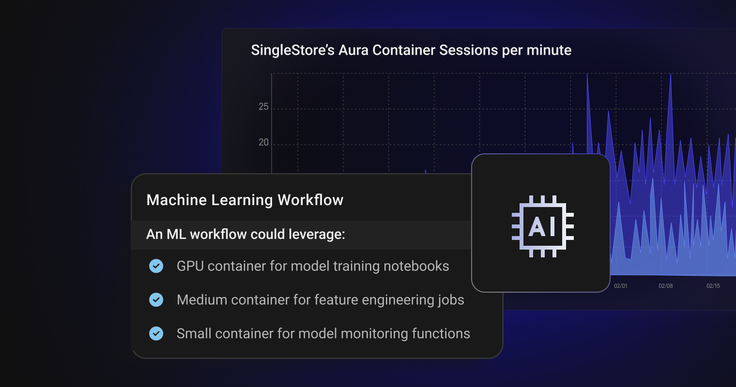
The problem we're solving
Development teams need flexible compute resources to handle varying workload demands from exploratory data analysis in notebooks to production batch processing jobs and serverless functions. Fixed resource limits often force teams to either over-provision or work around constraints, neither of which is optimal for productivity or cost.
Our new container-based compute model addresses this by letting you:
Choose the right container size for each workload
Scale resources up or down based on actual needs
Run unlimited scheduled jobs without hitting container limits
Access GPU resources for AI/ML workloads when needed
Available container types
Small containers
Ideal for lightweight data exploration, simple queries and development work
Suitable for most notebook sessions and basic ETL jobs
Medium containers
Designed for production workloads, complex data processing and multi-stage pipelines
Recommended for scheduled jobs with moderate resource requirements
GPU containers
Purpose-built for machine learning model training and inference
Accelerated computing for vector operations and AI workloads
Using containers across Aura applications
SingleStore Notebooks
When creating or running a notebook, select your container size based on the complexity of your analysis:
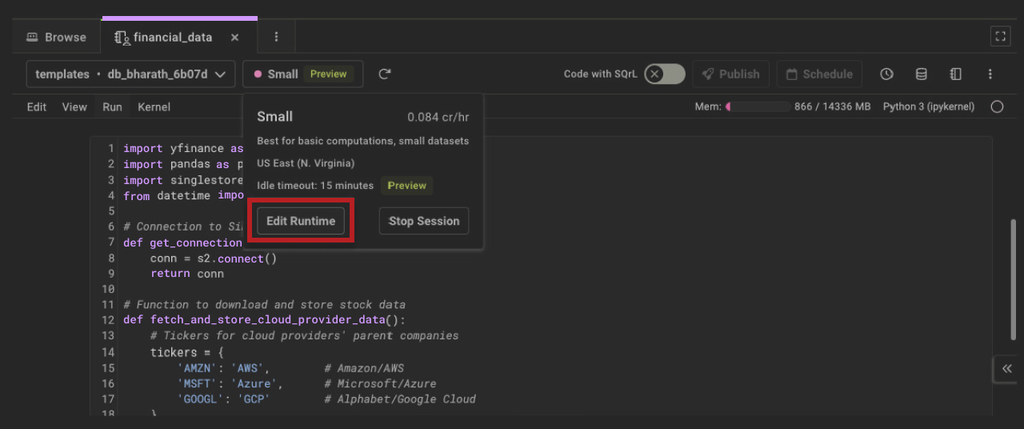
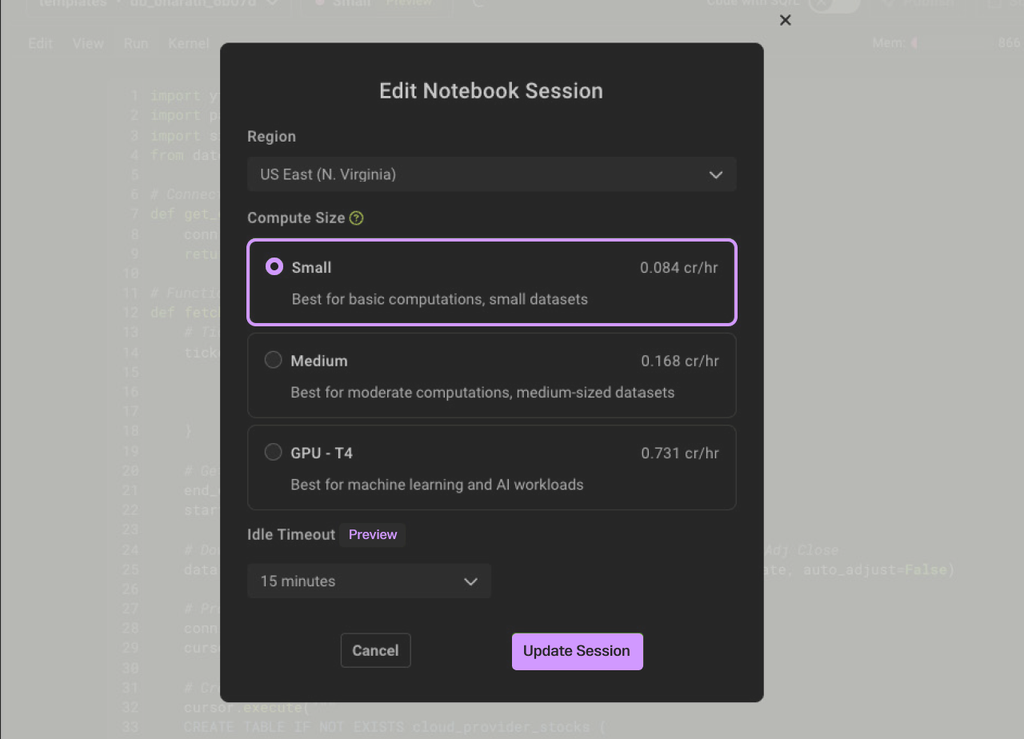
Use small containers for data exploration and query development. Switch to medium or GPU containers when working with large datasets or running ML models.
SingleStore Jobs
Configure scheduled jobs to run with appropriate container resources:
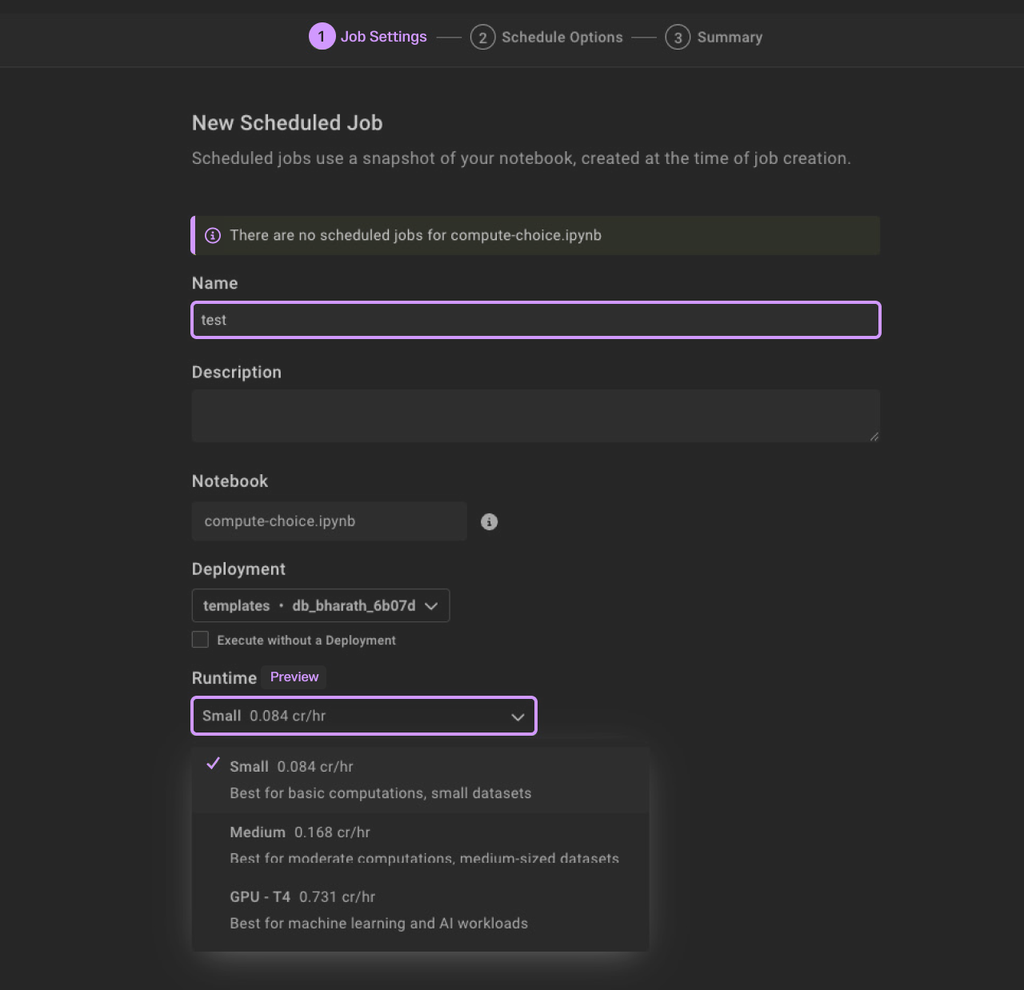
Select container size based on job requirements — small for simple data movement, medium for complex transformations or GPU for ML pipeline jobs.
Cloud Functions
Deploy serverless functions with configurable compute:
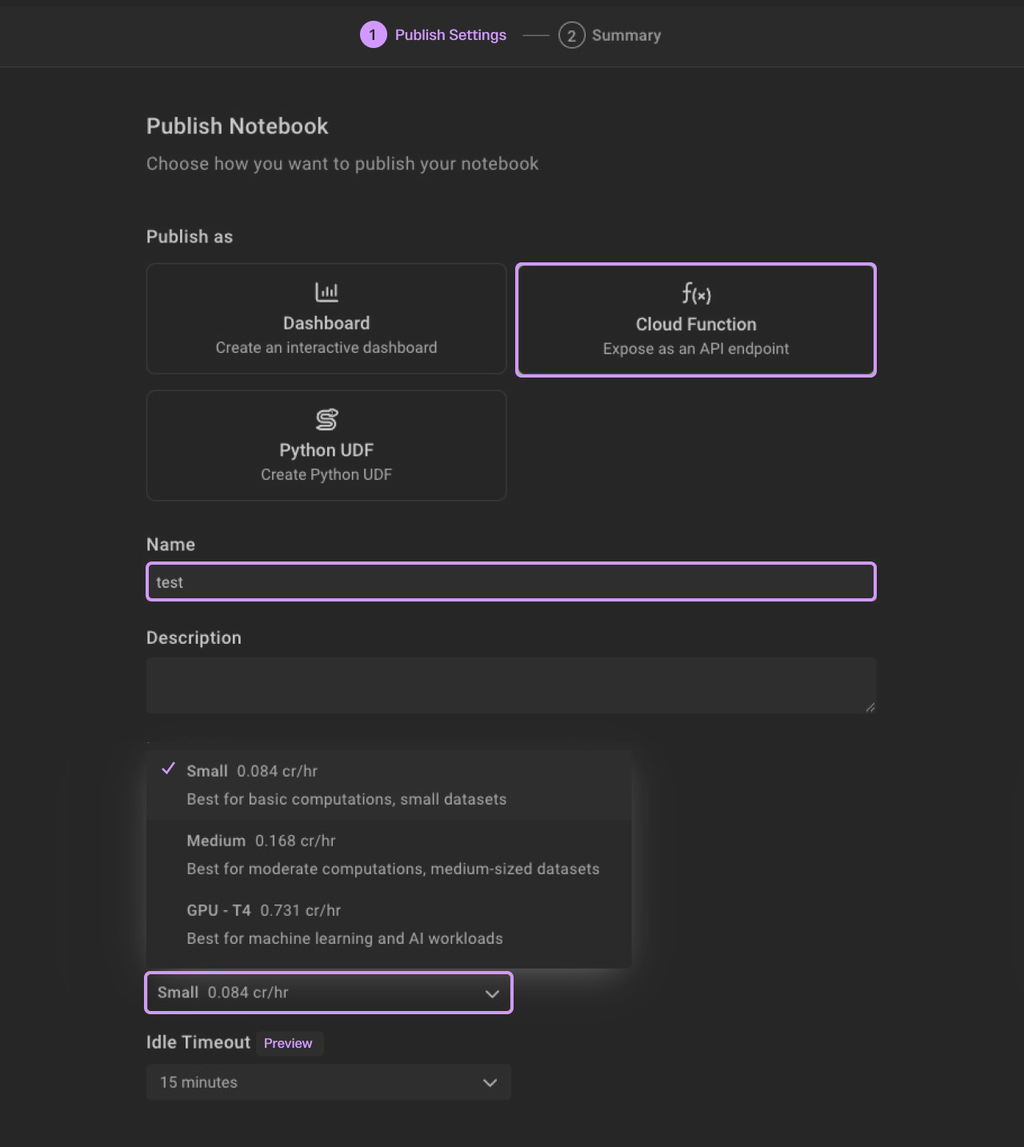
Match container size to function complexity and expected load. Functions automatically scale within the selected container type.
Practical use cases
Data engineering pipeline
A typical ETL pipeline might use:
Small container for initial data validation functions
Medium container for the main transformation job
Small container for final data quality checks
Machine learning workflow
An ML workflow could leverage:
GPU container for model training notebooks
Medium container for feature engineering jobs
Small container for model monitoring functions
Real-time analytics
For streaming analytics:
Medium containers for continuous processing jobs
Cloud functions with small containers for event-driven processing
Notebooks with varying sizes for ad-hoc analysis
Managing resources effectively
Usage safeguards
To prevent accidental resource consumption:
Maximum 50 active container sessions per organization
Maximum 20 new container sessions per minute
These limits protect against runaway processes while allowing legitimate scaling needs. We will provide admins options to configure limits per aura workload in the near future.
Role-Based Access Control
Administrators can control who creates and manages container workloads:
Assign permissions for creating notebooks, jobs and functions
Set limits on container types available to different teams
Monitor usage across the organization
Getting started and best practices
1. Assess your workload requirements
Identify which processes need small, medium or GPU containers
Estimate usage patterns for different team workflows
Plan resource allocation across projects
2. Optimize container usage
For Notebooks:
Default to small containers for exploration
Upgrade to larger containers only for intensive computations
Terminate idle sessions to avoid unnecessary charges
For Scheduled Jobs:
Profile job requirements before selecting container size
Use smaller containers for frequent, lightweight jobs
Reserve medium/GPU containers for complex batch processing
For Cloud Functions:
Match container size to expected request volume
Use small containers for simple transformations
Consider medium containers for complex logic or high throughput
3. Usage and tracking
Head to the Billing & Usage Page to estimate your monthly usage and view the breakdown of Aura Apps consumption
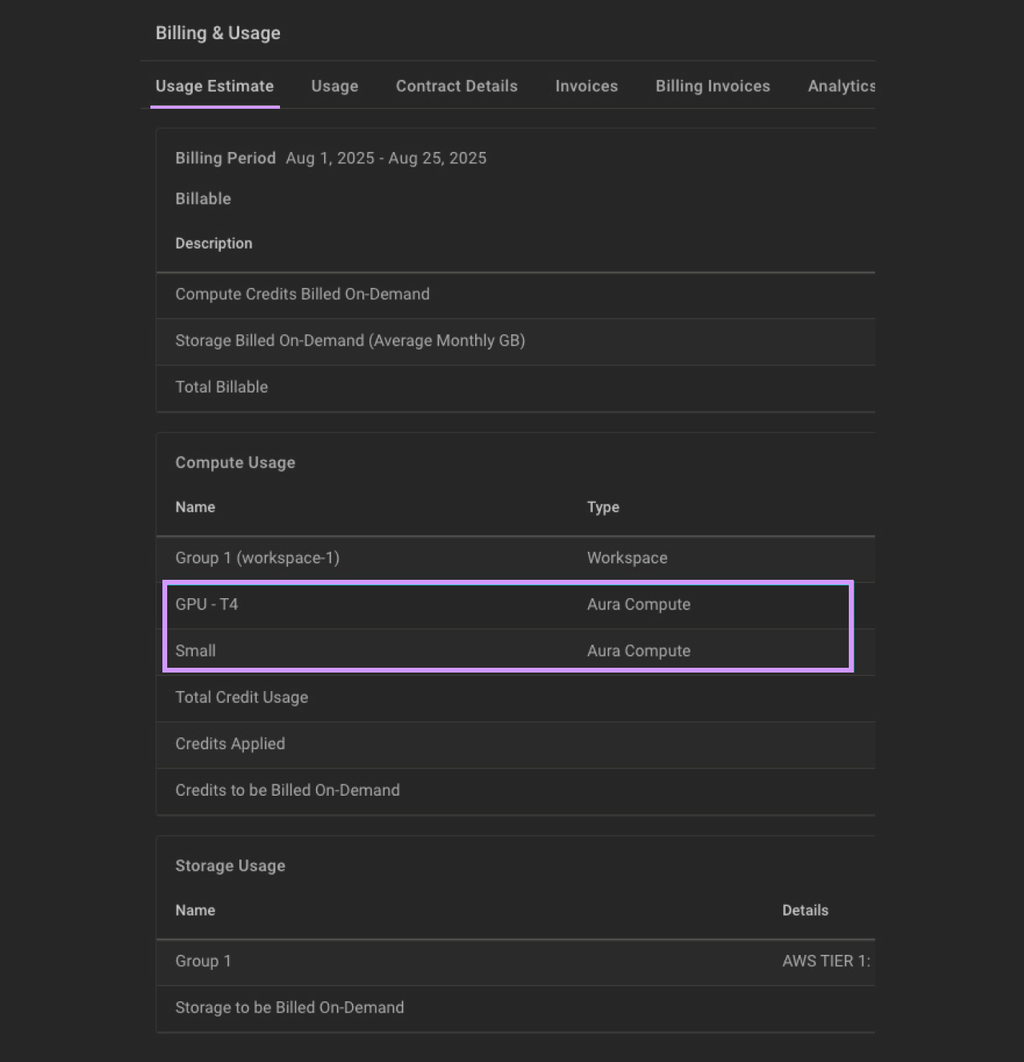
As an Aura Admin you can check your Aura resources consumption and usage by heading over to the Aura Compute sessions page.
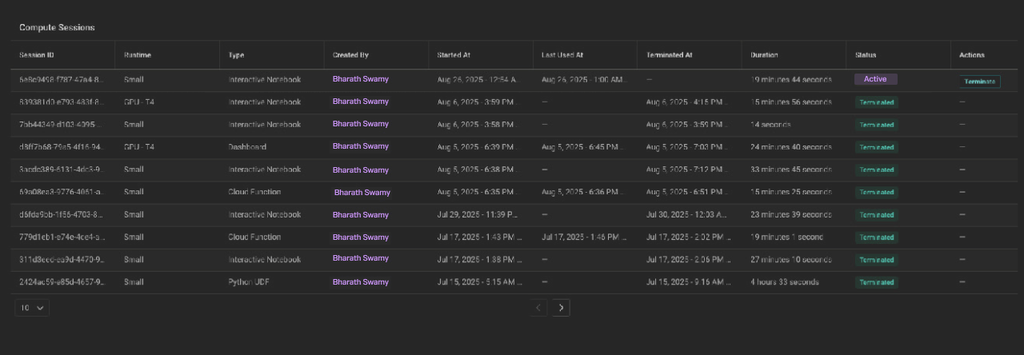
Future plans
1. Improved visualizations
We are working on providing better visualizations and breakdown of individual app usage in the near future for better app usage monitoring and observability.
2. Ability to configure access controls for each specific role
Set up RBAC to ensure appropriate access:
1Admin → Manage all container types2Data Scientists → Access GPU containers for ML work3Analysts → Use small/medium containers for analysis4Developers → Deploy functions with defined container limits
Support and resources
Check out our complete Aura Documentation to understand all the features we offer and don't hesitate to reach out to provide feedback, suggestions for any new feature that you’d want us to prioritize in our product roadmap.
Frequently Asked Questions


.jpg?width=24&disable=upscale&auto=webp)










_featured.png?height=187&disable=upscale&auto=webp)
